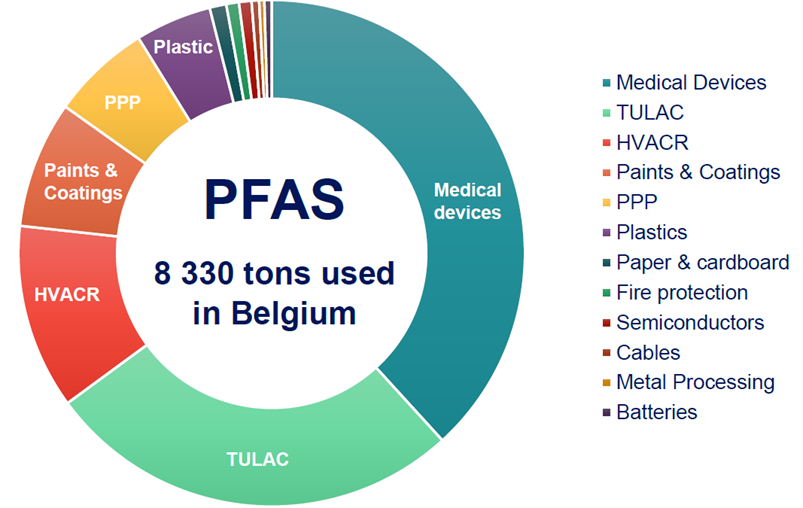
18 March 2024
Exploring PFAS Alternatives: RDC Environment’s Contribution in a Belgian Study
The global effort to reduce the effects of per- and polyfluoroalkyl substances (PFAS), also known as “forever chemicals,” is becoming increasingly important due to environmental and health concerns.
Study Overview
FPS Economy and FPS Public Health commissioned a market study to characterize the use of PFAS in Belgium. RDC Environment in partnership with ERDYN conducted this study. The report of this study is publicly available here.
Purpose & Process
The main goals of the study was to identify the primary sources of PFAS (ERDYN) and suggest public policies that support the development of safer alternatives (RDC Environment).
The report includes information from organizations like ECHA and the OECD, literature reviews, RDC Environment’s expertise and insights from industry stakeholders through various workshops and interviews (in the medical devices, technical textiles and HVACR sectors).
Study Results
Finding PFAS-free alternatives presents a significant challenge in certain industries, such as technical textiles, HVACR (heating, ventilation, air conditioning, and refrigeration), and medical devices. Because replicating the key properties of PFAS, like chemical resistance, thermal stability, and durability, is difficult. Additionally, regulatory and economic constraints restrict the development of PFAS-free solutions.
In the study, 12 sectors were classified into different levels of PFAS-alternative readiness, and specific policies recommended for each case.
- For sectors with existing and viable PFAS alternatives, the scope for intervention is more limited, but can include encouraging the diffusion of information on alternatives, short-term subsidization for switching and greater restrictions on PFAS use in advance of any potential full ban.
- For sectors with potential alternatives but with drawbacks (cost, quality, regulatory), policies could include favoring joint R&D / knowledge sharing, subsidization for R&D and others.
- For sectors with no alternatives or very limited development, policies can include subsidies for R&D, more encouragement for collaboration, and supporting technologies that reduce PFAS emission in the short run.
Read the full report here for more details. If you have questions or need more information, don’t hesitate to contact us.

